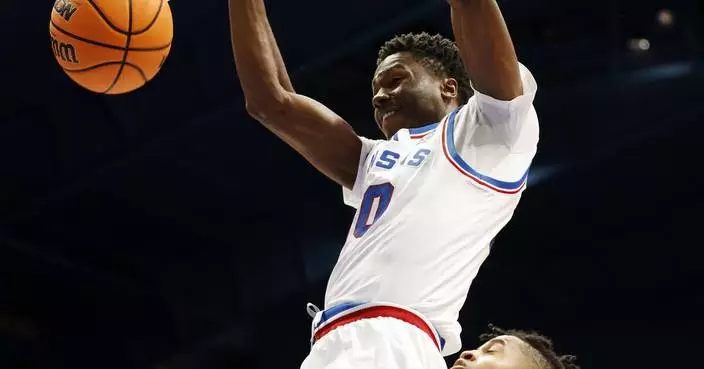NEW YORK (AP) — The celebrated actor and honorary Academy Award recipient Gena Rowlands is suffering from Alzheimer's disease, her son, the filmmaker Nick Cassavetes, has revealed.
Cassavetes, in an interview with Entertainment Weekly published Tuesday, said Rowlands has had Alzheimer's for five years. In the 2004 film “The Notebook,” Cassavetes directed his mother, who played the older version of the character played by Rachel McAdams, as a woman with dementia.
"We spent a lot of time talking about Alzheimer’s and wanting to be authentic with it, and now, for the last five years, she’s had Alzheimer’s,” Cassavetes said. “She’s in full dementia. And it’s so crazy — we lived it, she acted it, and now it’s on us.”
A representative for Rowlands confirmed that Cassavetes “speaks for the family.”
Rowlands, who received an honorary Oscar in 2015, made 10 films with her husband, John Cassavetes, including 1974's “A Woman Under the Influence” and 1980's “Gloria.” She was Oscar nominated for both performances. She also won four Emmy awards. Her last credited performance was the 2014 comedy “Six Dance Lessons in Six Weeks.”
Rowlands's mother, actor Lady Rowlands, also had Alzheimer's. During the making of “The Notebook,” Gena Rowlands said she channeled her mother.
“I went through that with my mother, and if Nick hadn’t directed the film, I don’t think I would have gone for it — it’s just too hard,” Rowlands told O magazine in 2004. “It was a tough but wonderful movie.”

FILE - Actor Gena Rowlands poses for a portrait at the London West Hollywood hotel in West Hollywood, Calif., on Dec. 4, 2014. Rowlands is suffering from Alzheimer’s disease, says her son, the filmmaker Nick Cassavetes. Cassavetes, in an interview with Entertainment Weekly published Tuesday, says Rowlands has had Alzheimer’s for five years. (Photo by Chris Pizzello/Invision/AP, File)

FILE - Actor Gena Rowlands, puts on make-up in her dressing room for her role as leading lady in "Middle of the Night", in New York on Nov. 21, 1956. Rowlands is suffering from Alzheimer’s disease, says her son, the filmmaker Nick Cassavetes. Cassavetes, in an interview with Entertainment Weekly published Tuesday, says Rowlands has had Alzheimer’s for five years. (AP Photo/Hans von Nolde, File)

FILE - Actor Gena Rowlands poses for a photo in Los Angeles on Sept., 21, 1957. Rowlands is suffering from Alzheimer’s disease, says her son, the filmmaker Nick Cassavetes. Cassavetes, in an interview with Entertainment Weekly published Tuesday, says Rowlands has had Alzheimer’s for five years. (AP Photo/Dick Strobel, File)

FILE - Actor Gena Rowlands poses for a portrait at the London West Hollywood hotel in West Hollywood, Calif., on Dec. 4, 2014. Rowlands is suffering from Alzheimer’s disease, says her son, the filmmaker Nick Cassavetes. Cassavetes, in an interview with Entertainment Weekly published Tuesday, says Rowlands has had Alzheimer’s for five years. (Photo by Chris Pizzello/Invision/AP, File)















